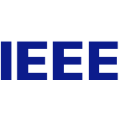Real-time visual localization of needles is necessary for various surgical applications, including surgical automation and visual feedback. In this study we investigate localization and autonomous robotic control of needles in the context of our magneto-suturing system. Our system holds the potential for surgical manipulation with the benefit of minimal invasiveness and reduced patient side effects. However, the non-linear magnetic fields produce unintuitive forces and demand delicate position-based control that exceeds the capabilities of direct human manipulation. This makes automatic needle localization a necessity. Our localization method combines neural network-based segmentation and classical techniques, and we are able to consistently locate our needle with 0.73 mm RMS error in clean environments and 2.72 mm RMS error in challenging environments with blood and occlusion. The average localization RMS error is 2.16 mm for all environments we used in the experiments. We combine this localization method with our closed-loop feedback control system to demonstrate the further applicability of localization to autonomous control. Our needle is able to follow a running suture path in (1) no blood, no tissue; (2) heavy blood, no tissue; (3) no blood, with tissue; and (4) heavy blood, with tissue environments. The tip position tracking error ranges from 2.6 mm to 3.7 mm RMS, opening the door towards autonomous suturing tasks.
翻译:对各种外科手术应用,包括手术自动化和视觉反馈,针头的实时直观定位是必要的,包括手术自动化和视觉反馈。在本研究中,我们调查针头的本地化和自主机器人控制,在磁脉压系统中调查针头的本地化和自主机器人控制。我们的系统具有进行外科手术操作的潜力,其好处是尽量减少入侵,减少病人的副作用。然而,非线性磁场产生不直观的力量,要求基于位置的微妙控制,超出人类直接操作的能力。这使得自动针头本地化成为必要。我们的本地化方法结合了神经网络断裂和古典技术,我们能够在清洁的环境中始终将针头定位为0.73毫米的射线管错误和2.72毫米的射线管错误。平均本地化RMS误差为2.16毫米,适用于我们在实验中使用的所有环境。我们将这种本地化方法与闭环反馈控制系统结合起来,以显示本地化对自主控制的进一步适用性。我们的针头能够沿直线路径运行:(1)无血液、无组织;(2)重血、无组织;(3)从血液、无组织、无组织、无组织、无组织、无正重血组织;(3)从正正正正正正向正正正正向正正正方位、正向正方位,直向正正方位;(4)。




